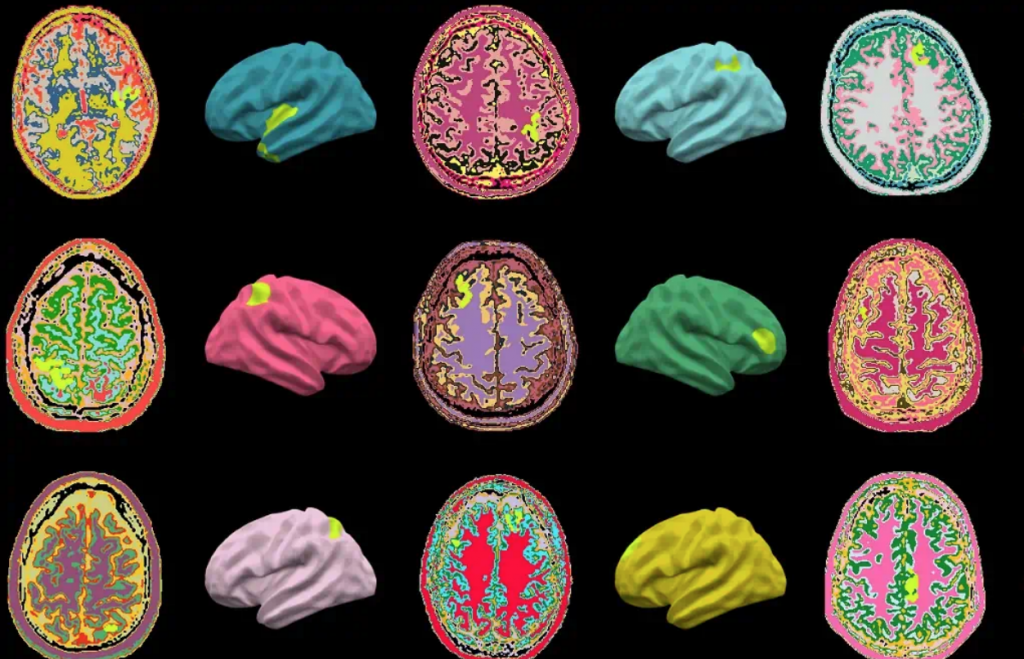
Brain abnormalities identified by the MELD AI algorithm (highlighted in lime green) on MRI scans of children and adults with epilepsy from around the world. (Source: UC)
AI Detects Brain Abnormalities that Could Boost Epilepsy Treatments
Not all but many American families have some sort of experience with the brain disorder known as epilepsy. A disorder in which nerve cell activity in the brain is disturbed, causing seizures.
Epilepsy may occur as a result of a genetic disorder or an acquired brain injury, such as a trauma or stroke.
During a seizure, a person experiences abnormal behavior, symptoms, and sensations, sometimes including loss of consciousness. There are few symptoms between seizures. It’s usually treated by medications and in some cases by surgery, devices, or dietary changes.
Right now there are no known cures for epilepsy. However, incredible advancements in research have helped us understand the mechanisms that cause seizures better than at any other point in history. One of the most promising contributions to ridding us of this disability comes from a story at sciencedaily.com which is about adding AI to the medical team.
An algorithm that can detect subtle brain abnormalities which cause epileptic seizures has been developed by a UCL-led team of international researchers.
Finding Lesions MRIs Can Miss
The Multicentre Epilepsy Lesion Detection project (MELD) used more than 1,000 patient MRI scans from 22 global epilepsy centers to develop the algorithm, which provides reports of where abnormalities are in cases of drug-resistant focal cortical dysplasia (FCD) — a leading cause of epilepsy.
FCDs are areas of the brain that have developed abnormally and often cause drug-resistant epilepsy. It is typically treated with surgery, however identifying the lesions from an MRI is an ongoing challenge for clinicians, as MRI scans in FCDs can look normal.
To develop the algorithm, the team quantified cortical features from the MRI scans, such as how thick or folded the cortex/brain surface was and used around 300,000 locations across the brain.
The findings, published in Brain, found that overall the algorithm was able to detect the FCD in 67% of cases in the cohort (538 participants).
Co-senior author, Dr. Sophie Adler (UCL Great Ormond Street Institute of Child Health) added:
“We hope that this technology will help to identify epilepsy-causing abnormalities that are currently being missed. Ultimately it could enable more people with epilepsy to have potentially curative brain surgery.”
Epilepsy does strike more of the population than you might imagine. The data show the disorder is widespread around the world. In 2015, about 3 million U.S. adults and 470,000 children had active epilepsy (under treatment or with recent seizures). The number of adults with active epilepsy rose from 2.3 million in 2010 to 3 million in 2015. The number of children with the condition increased from 450,000 in 2007 to 470,000 in 2015. In the UK some 600,000 people are affected. These increases are likely due to population growth.
The CDC website only gives numbers going back to 2015 and you can be sure those numbers are higher 7 years later. That makes possible new discoveries using the MELD algorithm more vital than ever.
read more at sciencedaily.com







Leave A Comment